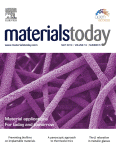
Materials Today
Scope & Guideline
Connecting Researchers with Cutting-Edge Discoveries
Introduction
Aims and Scopes
- Synthesis and Characterization of Advanced Materials:
The journal publishes research on novel methods for synthesizing materials, including nanomaterials, polymers, and composites, as well as innovative characterization techniques that elucidate the properties and behaviors of these materials. - Functional Applications in Biomedical Engineering:
A significant focus of the journal is on the application of materials in biomedical engineering, including drug delivery systems, tissue engineering scaffolds, and anti-cancer therapies, emphasizing how material properties can enhance therapeutic efficacy. - Energy Storage and Conversion Technologies:
Research related to materials used in energy storage (like batteries and supercapacitors) and conversion (such as photocatalysts for hydrogen production) is prominently featured, highlighting sustainable materials and their role in addressing energy challenges. - Nanotechnology and Nanomaterials:
The journal emphasizes the development and application of nanomaterials, including their use in sensors, drug delivery, and environmental remediation, showcasing their unique properties and potential for innovation. - Sustainable and Green Materials:
Materials Today promotes research on environmentally friendly materials and processes, including biodegradable polymers and sustainable manufacturing techniques, focusing on the reduction of environmental impact in materials science. - Responsive and Smart Materials:
The exploration of materials that can respond to external stimuli (such as temperature, pH, or light) is a vital area, showcasing advancements in smart materials for applications in sensors, actuators, and advanced manufacturing.
Trending and Emerging
- Biomaterials and Tissue Engineering:
Research focusing on biomaterials for medical applications, particularly in tissue engineering and regenerative medicine, is rapidly increasing. This includes studies on hydrogels, scaffolds, and drug delivery systems designed for enhanced biological compatibility and function. - Machine Learning and Computational Materials Science:
The integration of machine learning techniques in materials design and discovery is becoming a prominent theme, with studies aimed at optimizing material properties and accelerating the development of new materials through computational approaches. - Metal-Organic Frameworks (MOFs):
There is a growing interest in MOFs for a variety of applications, including gas storage, catalysis, and environmental remediation. Research is increasingly exploring their multifunctionality and adaptability in diverse fields. - Sustainable Materials and Green Chemistry:
The emphasis on sustainability is evident, with an increase in studies focusing on biodegradable materials, recycling processes, and green synthesis methods aimed at minimizing environmental impact. - Nano- and Micro-Scale Materials:
Research on materials at the nano and micro-scale, particularly those with unique electronic, optical, and mechanical properties, is trending. This includes studies on nanosensors, nanocomposites, and their applications across various industries. - Smart and Responsive Materials:
The development of materials that can respond to environmental stimuli (such as temperature, light, or moisture) is on the rise, with applications in sensors, actuators, and self-healing materials being increasingly explored.
Declining or Waning
- Traditional Manufacturing Techniques:
There has been a noticeable decline in papers focusing on conventional manufacturing methods, such as bulk metal fabrication and standard polymer processing techniques, as the field shifts towards additive manufacturing and advanced fabrication methods. - Basic Materials Science without Application Focus:
Research that solely addresses basic materials science principles without a clear application or innovation aspect is becoming less prevalent, as the journal increasingly prioritizes studies with practical implications and technological advancements. - Single-component Material Studies:
The trend is moving away from studies focusing on single-component materials towards more complex systems, including hybrid and composite materials that leverage synergies between different material types for enhanced performance. - Basic Characterization Techniques:
There is a gradual reduction in publications that primarily discuss traditional characterization methods, as newer, more sophisticated techniques that provide deeper insights into material properties are favored.
Similar Journals

JOURNAL OF ELECTRONIC MATERIALS
Elevating Knowledge in Condensed Matter Physics and BeyondWelcome to the Journal of Electronic Materials, a premier publication in the field of materials science. Published by Springer, this esteemed journal has been a beacon for groundbreaking research in electronic, optical, and magnetic materials since its inception in 1972. As an established resource, it boasts a commendable impact factor and categorically ranks in the second quartile (Q2) in key areas such as Condensed Matter Physics and Electrical and Electronic Engineering, as well as holding a respectable third quartile ranking in fields related to Electronic, Optical, and Magnetic Materials and Materials Chemistry. Researchers, professionals, and students can access a wealth of knowledge as we publish original articles, reviews, and cutting-edge research that push the boundaries of science and technology in these critical fields. Stay informed and engaged as we explore advancements that shape the future of electronic materials.
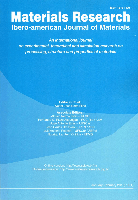
Materials Research-Ibero-american Journal of Materials
Unlocking the potential of materials science for a global audience.Materials Research-Ibero-american Journal of Materials, published by the UNIV FED SAO CARLOS, DEPT ENGENHARIA MATERIALS, is a prominent platform dedicated to advancing the field of materials science. Launched in 1998, this Open Access journal has fostered a culture of inclusive knowledge sharing, allowing researchers and practitioners worldwide to access valuable insights in Condensed Matter Physics, Materials Science, Mechanical Engineering, and Mechanics of Materials. With a commendable Q3 ranking in these diverse categories in 2023, the journal provides a vital resource that bridges theoretical research and practical applications in materials technology. Covering a range of topics from novel material characterization to innovative engineering solutions, Materials Research serves as a critical forum for contributors across the globe, particularly those in Latin America. Researchers, students, and professionals are encouraged to engage with this journal, which operates with a clear commitment to high standards and is based in São Carlos, Brazil, further enhancing its relevance and appeal within the international materials research community.

MRS Advances
Unveiling Breakthroughs in Mechanical EngineeringMRS Advances, published by Springer Heidelberg, is an esteemed academic journal that serves as a vital platform for disseminating cutting-edge research in the fields of condensed matter physics, materials science, and mechanical engineering. With an ISSN of 2731-5894 and an E-ISSN of 2059-8521, the journal is hosted in Switzerland and encompasses an impressive spectrum of innovative studies that impact both theoretical and practical applications. Throughout its converged years from 2012 and continuing through 2024, MRS Advances has established itself with notable rankings, including Q4 in condensed matter physics and Q3 in several related categories. This journal not only enriches the academic community with its rigorous peer-reviewed articles, but also encourages open discussions that further advance research innovations. Although currently not designated as an open-access journal, its accessibility through institutional subscriptions ensures that professionals, researchers, and students can engage with the latest advancements in the material science arena. Emphasizing its relevance, MRS Advances is dedicated to fostering interdisciplinary collaboration and inspiring new discoveries within the global research community.
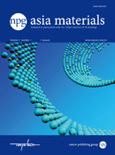
NPG Asia Materials
Advancing the Frontiers of Materials ScienceNPG Asia Materials, a premier journal published by NATURE PORTFOLIO, stands at the forefront of research in the fields of condensed matter physics, materials science, and modeling and simulation. With an impressive Impact Factor gracing its Q1 rankings in 2023, this open-access journal, established in 2012, offers a vital platform for disseminating high-quality research articles, reviews, and perspectives that advance the understanding of material properties and innovative applications. Based in the United States and catering to a global audience, NPG Asia Materials features cutting-edge contributions that not only enhance academic scholarship but also provoke discussions relevant to both industry and academia. Researchers, professionals, and students are invited to explore its extensive archive of work, covering insights from 2009 to 2024, in a bid to stay abreast of the latest developments in these rapidly evolving scientific domains.
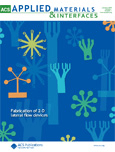
ACS Applied Materials & Interfaces
Exploring Breakthroughs in Materials Science and InterfacesACS Applied Materials & Interfaces, published by the American Chemical Society, stands as a leading journal in the field of applied materials, nanotechnology, and interdisciplinary research in medicine. With an impressive Impact Factor that places it in the Q1 category across Materials Science, Medicine, and Nanoscience and Nanotechnology, this journal consistently ranks among the top tier, evidencing its significance and influence in advancing scientific knowledge. The journal’s scopus ranking of 33 out of 463 in General Materials Science further underscores its critical role in disseminating innovative and high-quality research. Although it is not an open-access journal, a diverse range of access options is available, ensuring that vital research findings are accessible to a broad audience of researchers, professionals, and students. Targeting breakthroughs in the synthesis, characterization, and application of materials and interfaces, ACS Applied Materials & Interfaces serves as a pivotal platform for publishing cutting-edge studies essential for future technological advancements.

ACS Materials Letters
Catalyzing Progress in Cutting-edge ResearchACS Materials Letters is an esteemed peer-reviewed journal published by the American Chemical Society, emphasizing groundbreaking research and advancements in the fields of materials science, biomedical engineering, and chemical engineering. With a robust update and established reputation since its inception in 2019, this journal has rapidly ascended to the top tiers, achieving Q1 rankings in key categories such as Biomedical Engineering, Chemical Engineering (miscellaneous), and Materials Science (miscellaneous) in 2023. The journal boasts impressive Scopus rankings, including #14 in General Chemical Engineering and #19 in Biomedical Engineering, placing it among the elite publications in these domains. While not fully open access, ACS Materials Letters facilitates the dissemination of high-impact research accessible to academics and industry professionals alike. With its comprehensive scope and rigorous selection process, the journal serves as a vital resource for researchers and students eager to stay abreast of the latest innovations and technologies shaping materials science and engineering.
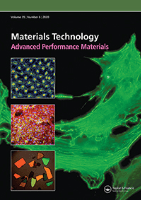
MATERIALS TECHNOLOGY
Pioneering Research in Materials ScienceMATERIALS TECHNOLOGY is a prestigious academic journal published by Taylor & Francis Ltd, based in the United Kingdom. With an ISSN of 1066-7857 and an E-ISSN of 1753-5557, this journal has established itself as a vital resource in the fields of Condensed Matter Physics, Materials Science, Mechanical Engineering, and Mechanics of Materials, earning a Q2 ranking in multiple categories as of 2023. With a rich publication history that dates back to the early 1970s, it serves as an essential platform for disseminating innovative research and developments in materials technology. Although not available through Open Access, the journal continues to attract contributions from leading researchers, ensuring high-quality articles that advance knowledge in the materials domain. The journal's commitment to excellence is reflected in its notable Scopus rankings, placing it within the 70th to 78th percentiles across several engineering and physics categories. As a vital resource for researchers, professionals, and students alike, MATERIALS TECHNOLOGY plays a critical role in shaping the future of materials science and engineering.

BULLETIN OF MATERIALS SCIENCE
Advancing the Frontiers of Materials ScienceBulletin of Materials Science, published by the Indian Academy of Sciences, is a distinguished journal that has been contributing to the field of materials science since its inception in 1979. With an ISSN of 0250-4707 and E-ISSN 0973-7669, it provides a platform for researchers to share groundbreaking studies and advancements in the mechanics of materials and general materials science. As of 2023, the journal holds a respectable Q3 ranking in both the Materials Science (miscellaneous) and Mechanics of Materials categories, highlighting its competitive position in the academic landscape. Although the journal currently does not operate under an open access model, it remains a vital resource for professionals and students keen on exploring innovative material developments and methodologies. With a commitment to promoting high-quality research, the Bulletin of Materials Science features rigorous peer-review processes, making it an essential reference for anyone engaged in the materials science domain.

Accounts of Materials Research
Empowering researchers with cutting-edge insights.Accounts of Materials Research is a premier journal published by the American Chemical Society, focusing on the multidimensional field of materials science. With a robust impact factor and a commitment to open-access research, it serves as a vital platform for leading-edge discoveries from 2020 to 2024. The journal has rapidly ascended to the top quartile in multiple categories, including Chemical Engineering, Materials Chemistry, and Polymers and Plastics, demonstrating its significant influence within the academic community. Recognized by Scopus as a key resource—with remarkable rankings that place it in the 95th percentile of its field—Accounts of Materials Research is devoted to publishing high-quality, innovative research that addresses critical challenges in materials development and implementation. This journal is essential for researchers, professionals, and students seeking to stay informed about the latest advancements and collaborative opportunities within the interdisciplinary landscape of materials science.
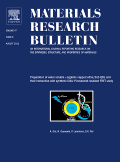
MATERIALS RESEARCH BULLETIN
Exploring the frontiers of materials science and engineering.MATERIALS RESEARCH BULLETIN is a prestigious journal published by Pergamon-Elsevier Science Ltd, dedicated to advancing the field of materials science and engineering. Since its inception in 1966, the journal has served as a platform for high-impact research, particularly in areas such as condensed matter physics, mechanical engineering, and materials mechanics. With an impressive Q1 ranking in multiple categories, including Condensed Matter Physics and Materials Science, MATERIALS RESEARCH BULLETIN stands out as a leading resource in its domain, aiming to disseminate innovative research findings and methodologies that address fundamental and applied aspects of materials. The journal’s rigorous peer-review process ensures the publication of high-quality articles, making it an essential resource for researchers, professionals, and students alike. With its ongoing commitment to fostering scientific discourse and collaboration, MATERIALS RESEARCH BULLETIN remains at the forefront of materials research, contributing significantly to the global scientific community.